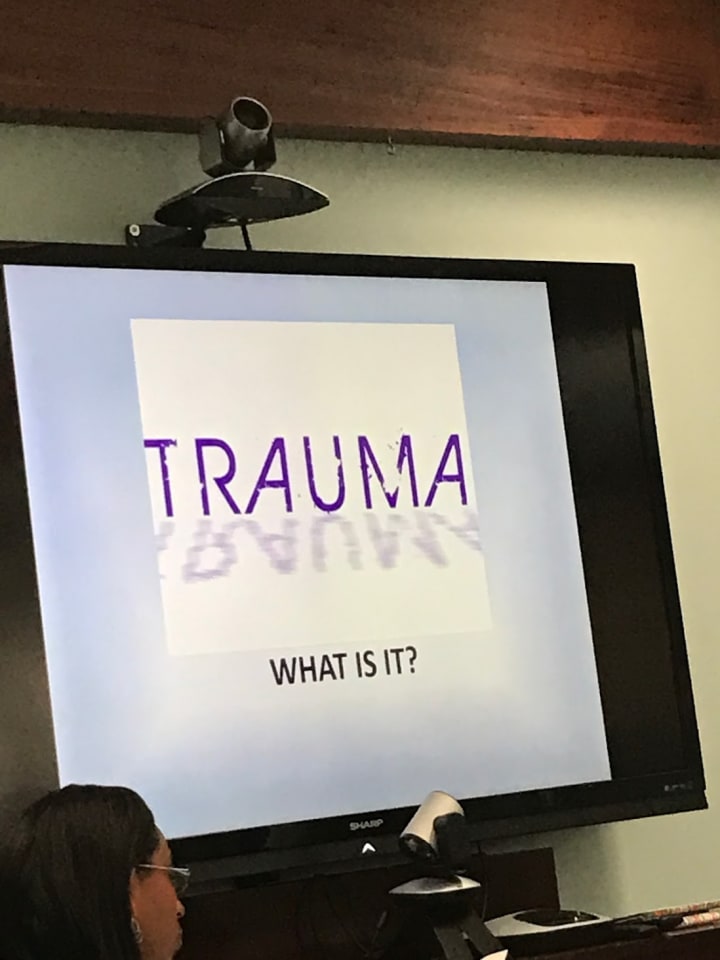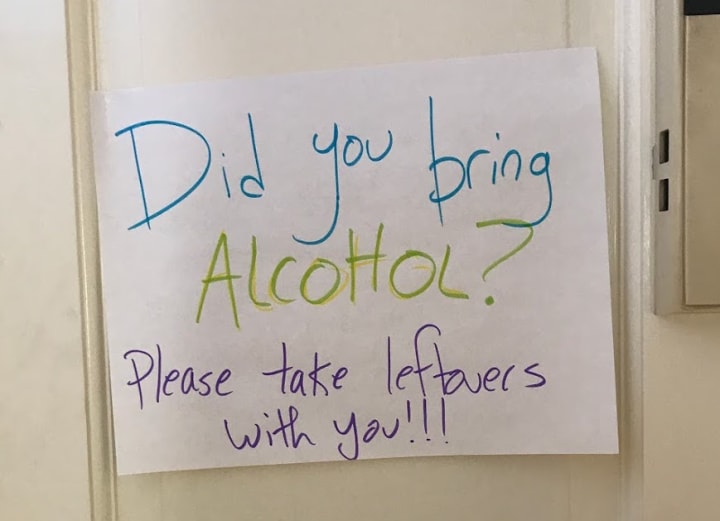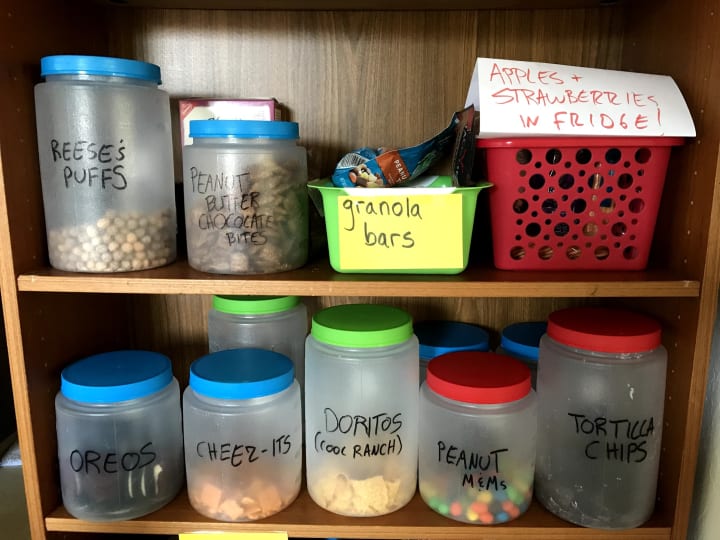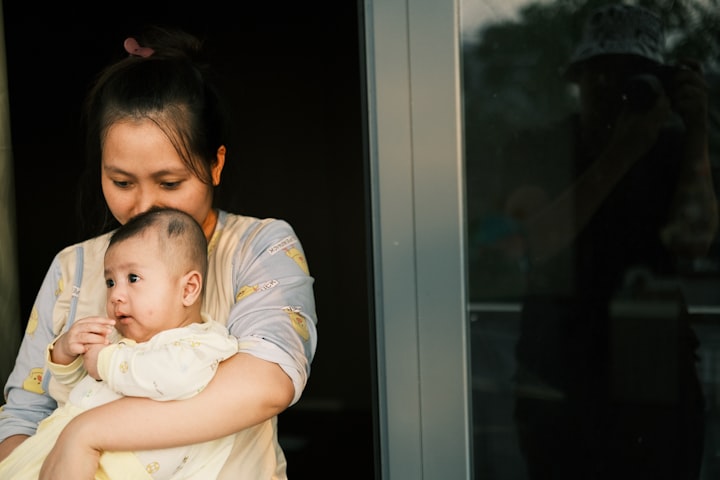My Parenting Passion
I've wanted to be a foster parent ever since I was a kid. Now, I'm living that dream.

A Dream Is Born
I loved magazines before I could even pronounce the word. I’d say “mazzah-geen” over and over, demanding that my parents hand over their just-read copies of Time and Science News and The Atlantic. I’d sprawl on the floor on my stomach, flipping through glossy pages and devouring stories and opinions and news.
Much of what I read in those “mazzah-geens” would go on to influence the way I saw the world, from book reviews that sent me into library shelves seeking inspiration for my own short stories to pieces on social justice and climate change that opened my eyes to otherwise invisible realities.
But the article that would change my life forever was a short piece in a local magazine, printed in Arizona in the mid 1990s. It was about the foster care and adoption system, with an emphasis on the dire circumstances faced by older youth in the system.
According to the article, once a child in the foster care system turns older than two, their chances for a long term, stable home life plummet. Statistics grow worse as children age, with tweens and teens facing absolutely miserable odds and very likely to “age out” of the system without the support network of a permanent family.
I was only a kid myself when I read it, but it sparked something within me. From that moment on, I knew that my life’s biggest goal was to serve as a loving, consistent presence in the lives of older youth in the foster care system.
Not many elementary schoolers cite “foster parent” as their dream, but when it came time to write my own essay about what I wanted to be when I grew up, I wrote about kids older than two and the many ways our child welfare system fails them. I described the house I wanted to buy, specifying that it would be in a good school district and have plenty of bedrooms so that no one had to share. In my mind, I served stacks of pancakes in a sun-filled breakfast nook before a day filled with therapy appointments and family visits.
This dream never left me. Throughout high school, I volunteered with different organizations that served struggling youth, from a facility for medically complex kids whose families couldn’t care for them at home to an after school reading program for kids whose families of origin didn’t speak English at home.
In college, when I got involved in cannabis legalization work or sex positive education, I made sure to write under a pseudonym so I didn’t risk my future ability to get approved to work with vulnerable youth. (I still do - Lacey Doddrow is not the name my kids or foster care agency knows me by!)
When I graduated and got my first job, one of the first things I did was meet with a financial adviser to talk about saving for a house, still committed to the multi-bedroom fantasy in an area with high quality schools.
Getting Ready
A few months after my 26th birthday, I began to take actionable steps toward accomplishing this lifelong goal. I reached out to a few foster care agencies in my area, wondering whether anyone would be willing to work with a single woman who didn’t even own her own house. To my delight, I found an agency that was thrilled about my unique circumstances. Better yet, that agency worked specifically with older foster youth who were having a difficult time finding a long term family placement due to trauma and related behaviors. This was the exact population I wanted to work with, so it was a perfect fit.
The agency assigned me a liaison, and with her help, I immediately got started on becoming certified through them. Because they work with high needs youth, I would need to not only get certified as a county approved foster home, but also as an “intensive therapeutic foster parent.” That meant taking extra classes, attending workshops, and reading books about how to effectively parent a tween or teen with a history of severe trauma and resulting behavioral symptoms.
I also needed to move into a new apartment. Living with a bunch of roommates who were also in their mid-20s wasn’t going to work, so I found a quiet two bedroom across the street from a park and set about making it a home. After three home inspections, which looked at everything from the hot water temperature to whether I had locked up every sharp object and dangerous cleaning supply, it was approved as a foster home.

The certification process was difficult and took almost an entire year. Every Saturday, I drove an hour from home and sat in a small classroom with a handful of other aspiring foster parents, taking classes on everything from the neurobiology of trauma to state and county laws to fire and earthquake safety. I did interviews with a number of social workers and therapists, who asked about my discipline strategies, my ability to welcome LGBTQ+ youth, my diet and sleep schedule, and just about everything else.

Living The Dream
I always expected that becoming a therapeutic foster parent would be fulfilling, but finally getting to live my lifelong dream was better than I ever imagined. My days soon took on the rhythms of parenthood, with pancakes at breakfast and bedtime gratitude lists at bedtime and absolute chaos in between.
I learned about video games and anime, quickly becoming well versed in all the characters and collectibles my foster son adored. We listened to Halo audiobooks together in the car on the way to school, and we joked in silly cartoon voices on the drive home from therapy sessions. I got to know the intricacies of the county child welfare system well enough to navigate through psychiatric approvals and family visit supervision to get my kiddos everything they needed.

Therapeutic foster parenting is incredibly hard work, and it’s certainly not for everyone. Some days, the bureaucratic misery weighs me down. Other days, I find myself frustrated and heartbroken by destructive behavior from my youth, which can sometimes be financially costly and is always emotionally draining. But my job is to help them work through the “big feelings” that lead to such outbursts, and seeing progress in their moods and choices makes all the tough days and late nights worth it.
It Takes A Village
Although foster parents do receive a stipend from their county, intended to defray the costs of housing a youth, this money rarely covers everything a child needs. In fact, in order to be approved, you must demonstrate the ability to provide for yourself and a foster youth without any additional assistance. While youth in foster care do qualify for some services, such as state financed health insurance and free or reduced lunch, a foster parent will be paying out of pocket for most other things, from summer camps to groceries.
That means that foster parents often have to get creative when it comes to getting everything their kiddos need to be happy and healthy. I’ve reached out to support networks and received donations of everything from video game consoles to personal training sessions for the youth I care for. Grants and larger charities can also help, but there are more forms to fill out and sometimes strings attached. And some things, like gifted clothing or out of state vacations, are actually harder to manage when it comes to youth in care.

As a therapeutic foster parent, I've found that I can make a difference not only to the life of an individual youth, but in an entire community. People want an opportunity to help out and get involved, and my friends, church, and family have all been shaped by this journey. It's not necessarily about money, but about making space for community care and helping provide new models for parenting, childhood, support, and mutual aid. A lot of folks I know have gotten more deeply involved with children and families in their area by first getting introduced through my work!
Education
Even though not everyone is cut out to become a foster parent, anyone can do their part to support youth and families. It’s common for people want to help kids in foster care, but without the ability to actually become a foster parent, they worry that there’s nothing they can do. As a day to day foster parent, I like to use social media and other formats to provide education about how people can take practical, actionable steps to improve the lives of youth and families impacted by foster care.
For example, many people picture horrific, violent abuse as the reason that a child would be removed from their family of origin, and assume that all people whose children were removed from their care are dangerous abusers. In fact, the most common reason that children are placed into the foster care system is not physical abuse but neglect.
In many cases, poverty and neglect look like the same thing, meaning that parents who want to provide a safe and healthy environment for their children but cant due to socioeconomic circumstances are punished rather than supported. This may look like a parent who has no choice but to work a late shift job but can’t afford childcare and leaves children alone with a sibling who is too young to legally watch them. Or, it may look like a parent living with children in an unsafe apartment, infested with pests or with appliances in poor repair, because they can’t afford anything better.
Legislative initiatives such as a higher minimum wage, universal basic income, or prohibitions against unpredictable scheduling systems all help families and prevent kids from entering the foster care system in the first place. Fighting to reduce poverty means that fewer kids end up in situations of neglect, leaving more resources available for the other cases where kids are genuinely in danger from an abusive or violent family member and need to be removed for their own safety.
Since drug use, incarceration, and untreated mental illness are also common elements in families with child welfare system involvement, other helpful policies can include treating drug abuse as a public health problem rather than a criminal one, reforming our criminal justice system, and providing more support to individuals dealing with mental illness or substance abuse problems. Anyone can get involved in enacting large scale institutional change that helps kids and families without ever having to devote their Saturdays to foster parenting certification classes!
There are so many other ways that education can empower people to make the world a bit easier for children and families. Knowing how to use sensitive terminology, being more thoughtful about what they share on social media, or donating suitcases are all great ways to be a force for change, but people just don’t have the information they need to get involved. I learn so much from these kids and their families, and I love getting to share that knowledge with others.
Changing My World
They say it takes a village to raise a child, and that’s even more true when it comes to foster care. I wouldn’t be able to do any of this work without my strong support network of online and off-line friends and loved ones. When a Black youth moved into my home, he complained about my cooking. I tried everything I could think of, until a Black friend of mine from an online community asked if I was cooking with Lawry’s, a spice blend that’s a staple in most Black American kitchens.
I immediately ordered a giant shaker of Lawry’s and made spaghetti sauce with it. My foster son instantly declared that it was “fire,” which was quite high praise indeed. In addition to advice on culturally important ingredients, I’ve also leaned on my support network for help repainting a bedroom wall, building a gaming computer, and hosting a movie night when I just needed a break.

Foster parenting can feel incredibly isolating sometimes. But joining this community of incredible youth, families, and other foster parents has made a huge difference in my life. This journey has changed me, stretched me, and broadened my perspectives on everything from YouTube comedy to junk food to political issues. Everything I do, and everything I experience, in my day-to-day makes a massive difference in my own skills and beliefs.
Different Parenting Makes A Difference
Therapeutic parenting is a bit of a misnomer, I believe. Most of the strategies I use with my youth are just good, effective, compassionate parenting. And the best part is that they work!
Being a therapeutic parent just means than you have goals in mind when you are parenting a child. There are specific behaviors, mental health symptoms, or beliefs that you want to help that child change. That means that when you make a parenting decision, you’re oriented toward what will help you and the child meet that goal - not toward what your parents did with you, or what feels most tempting at the time.
For example, kids with trauma often get into very angry or upset states, which can feel very “out of control” for them. I had a youth who would often break things or damage property when he got into these states.
Traditional parenting would dictate that I scold or punish the youth for this behavior. People might feel that “the kid needs to know that it isn’t okay to break things,” and that negative consequences are the only way to teach this.

However, if I step back and put my “therapeutic parent” hat on, I can see that my goal is not to “make the child understand that I don’t want him to break things,” but to “help the child stop engaging in the destructive behavior.” Sometimes that is accomplished by telling a child that I don’t want them to do that, but in this case, my kiddo seemed pretty clear on the concept that this wasn’t appropriate behavior. In fact, this awareness on his part tended to make things worse, since shame and guilt about being “bad” or fear of my reaction would escalate him even further and lead to more of the behavior, not less.
From my trainings, I knew that drinking cold water or touching ice can help a person come down from an agitated emotional state. The extreme temperature sensation helps the nervous system “reset.” Another thing that helps is drinking through a straw, which slows their breathing and also provides a neurological and biological way for the mind and body to calm down. Together, these two facts mean that a cold smoothie is an excellent way for an upset kiddo to find their way back to themselves.
So, I started making smoothies every time my youth got into an angry, destructive state. I would explain clearly and loudly that, scientifically, the smoothie would help him feel better, then offer it. Often, he would refuse at first, more committed to being angry at me and not doing anything that I wanted, even if he would also enjoy it. I would simply stay nearby, continuing to offer the smoothie.
Once he was able to calm down enough to start drinking it, I’d ask him if he felt better. He usually did - who doesn’t feel better after having their favorite frozen treat, anyway? I would then talk out loud about how we have lots of ways to feel better and help our bodies calm down, praising him for making the choice to drink the smoothie and soothe himself. I knew I was making progress when, one day, he noticed himself getting upset about something, and said “I think I need a smoothie.” He was able to recognize his own emotional state, then take actions to use healthy coping skills instead of feeling “out of control.” This was exactly what I had been trying to teach him!

Many people, more familiar with traditional parenting styles, see it as problematic that I “rewarded” my youth with a smoothie every time he got angry and broke things. They ask me whether I worry that he will learn the wrong lesson - that he can get a smoothie if he acts out. It’s a valid concern, but comes from a misunderstanding of child development. Most of the time, children - whether they have a history of trauma or not - act out not from a conscious and calculated choice, but because they feel overwhelmed by their emotions.
If a behavior is caused by a child feeling overwhelmed, angry, sad, or frightened, then scolding, punishing, or even ignoring the behavior won’t help, because it exacerbates the root cause. Instead, if your goal is to reduce the behavior, your best bet is to help the child feel loved, safe, and in control. This doesn’t reinforce bad behavior but instead teaches the self regulation kids need to manage their own moods and actions.

While almost all parents deal with things like whining, tantrums, and lying, it can be easier to see the cause and effect behind these behaviors when dealing with the extremes of therapeutic parenting. Sometimes, even the tiniest moments throughout my day are the most fulfilling. Seeing a kid who used to get frustrated very easily stick with a tough puzzle in a game, or watching a youth who previously had hunger-related meltdowns get up and serve himself a snack, lets me know that in the day to day grind of therapeutic foster parenting, I really am making a difference.
About the Creator
Lacey Doddrow
hedonist, storyteller, solicited advice giver, desert dweller






Comments
There are no comments for this story
Be the first to respond and start the conversation.